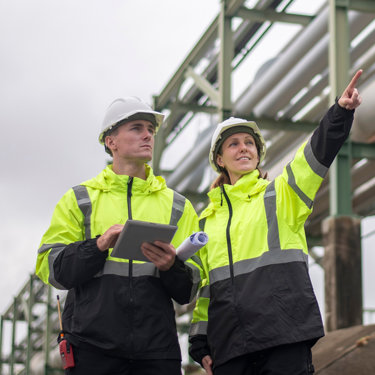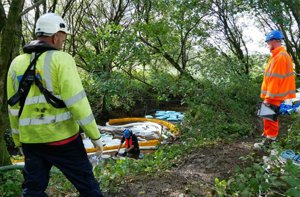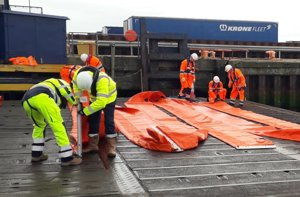
Pollution response
Ready to discuss your project?
Please leave your details and a member of our team will reach out to discuss your requirements in more detail and arrange next steps.
We can respond to a range of emergency pollution events including silt deposits, powder incidents, and liquid food spills.
We work with manufacturers, local authorities, and the emergency services to minimise business disruption and environmental impact.
Our expert emergency responders can respond to any substance spilled inland or in marine environments. A pollution is the presence in or introduction into the environment of a substance which has harmful or poisonous effects. Some substances may seem innocuous but can be widely damaging. Examples of these include:
- Silt deposits
- Dry products
- Food stuffs
Features and outputs
- Emergency response to a range of pollutants from silt deposits, powder incidents, and liquid food.
- 24/7-365 environmental incident and emergency response.
- We bring relevant experts in the volume required as we know every incident is unique.
- We have emergency service trained incident responders to take control of any situation.
Added value
Response Plus
Award-winning
Response
Communication
Trusted
We employ a range of techniques to deal with any contaminant.
Silt deposits
This is a significant and often underestimated source of water pollution, commonly caused by run off from construction sites into water courses.
Silt particles become suspended in the water where they can clog the gills of fish, smother fish eggs and impact how much light can penetrate the water. The silt may also be contaminated with hazardous chemicals.
We use measures such as filtration systems, over pumping systems, and silt curtains to minimise the movement of the silt before removing it for appropriate disposal.
Dry products
Powdered products such as cement dust, flour or sugar can be a danger to the environment and public safety.
They can become flammable when exposed to air, cause respiratory problems, affect visibility, and damage vegetation.
Our in-house chemists analyse the particulates and manage safe clean up.
Liquid food
When foods such as milk, beer or fruit juice get into watercourses, they are broken down by natural bacteria present in the water. This process can result in severe oxygen depletion, which can quickly kill aquatic life.
Our oxygenation service uses hydrogen peroxide dosing or physical aeration to help increase oxygen levels in the water allowing the contamination to dilute.
You might also be interested in...
Environmental compliance today, creating a sustainable tomorrow
Helping you reduce risk to the environment and your operation by managing assets compliantly while achieving commercial, ESG, and net-zero goals.
Contact our experts



